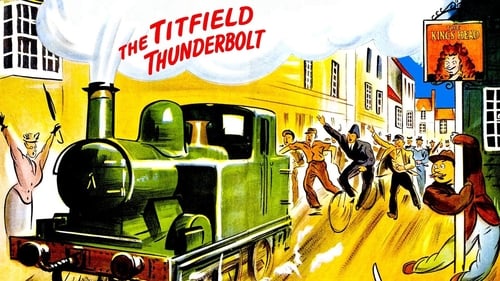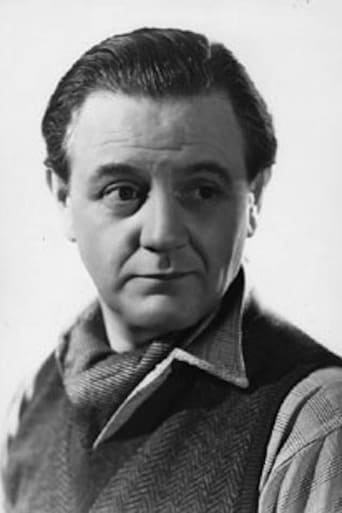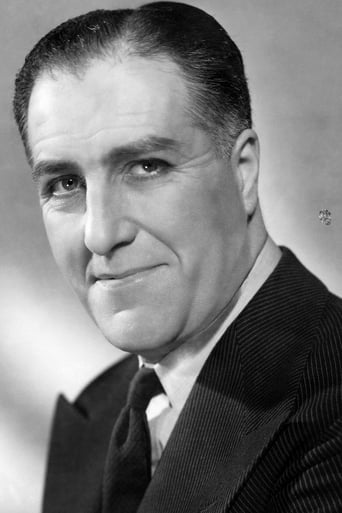FeistyUpper
If you don't like this, we can't be friends.
Fairaher
The film makes a home in your brain and the only cure is to see it again.
StyleSk8r
At first rather annoying in its heavy emphasis on reenactments, this movie ultimately proves fascinating, simply because the complicated, highly dramatic tale it tells still almost defies belief.
Invaderbank
The film creates a perfect balance between action and depth of basic needs, in the midst of an infertile atmosphere.
Leofwine_draca
As THE TITFIELD THUNDERBOLT started, I was surprised to see that it was in colour - a first for the Ealing studio. It soon becomes apparent that story-wise this is very similar to the likes of PASSPORT TO PIMLICO, in showing the efforts of a small community in coming together and fighting back against government bureaucracy. The different is that the city confines of PIMLICO are swapped for something altogether more bucolic.The story - about the privatisation of a railway line - is slight stuff and really an excuse for lots of larking about with trains, steam engines, buses, and the like. It's a little like THE RAILWAY CHILDREN in that respect. As is usual for an Ealing film, the cast is packed with celebrated character actors including the likes of Sid James, Naunton Wayne, Stanley Holloway, and a youthful Hugh Griffith. The humour is full of warmth and flows naturally, and the wit is evident in the sheer level of care taken with both script and production.
TheLittleSongbird
The Titfield Thunderbolt is not Ealing Studios' best work, nor does it try to be. It is essentially a charming and entertaining film that does let off a warm glow. Yes, even if the tone is patronising occasionally and some of the characterisations a tad sketchy, the story while on the slight side is always entertaining with enough charm to suffice. The cinematography, scenery, costumes and especially the trains are a delight to look at as well, and Georges Auric's score is jaunty and memorable. The satire in general entertains, the script has its quotable parts, the film is very well directed and the film moves along briskly. The performances are also polished with Stanley Holloway especially shining in the lead. Overall, even if the studio were starting to run out of steam, The Titfield Thunderbolt still makes for pleasurable viewing. 8/10 Bethany Cox
MartinHafer
Before I begin, I wonder if anyone else noticed that the plot to this film is actually very, very similar to one of Harold Lloyd's films, SPEEDY. It, like the TITFIELD THUNDERBOLT, is about an older form of transportation that is supposed to be phased out in favor of the new, but people band together to keep their old line. In the case of SPEEDY, it was a trolley in New York in the late 1920s. Here, with the THUNDERBOLT, it's a train in a rural English town near the Welsh border (in the fictional town of Titfield which is supposedly near Bath). And, in both cases, the competition does its best to prevent the old line from fulfilling its obligation--thus putting the old company out of business. TITFIELD THUNDERBOLT is a bit different, as it's more of an ensemble film and the humor is a lot more subtle, but otherwise the films sure are similar.The film begins with an announcement that the old train line will be closed and replaced by the new bus service. However, the vicar and some of the other locals have a nostalgic love of the old service and approach the government to buy the line and run it themselves. However, again and again, the bus company does its best to make sure the train won't run on time and thus lose its contract. The final straw seems to be when the train is vandalized and made unusable on the night before the government inspector is due to inspect the railroad. What will they do--and why is the word 'Thunderbolt' in the film's title?! This is a nice gentle sort of film that hearkens back to bygone days--to an England that no longer exists. As such, the film is a great historical document and both entertains AND reminds us of our past. Additionally, a lovely ensemble cast, nice and leisurely direction and lovely color (a rarity in Ealing films) make for a memorable trip down memory lane.
pjm-16
The working class stereotypes, written in by middle class script writers, are lazy, dishonest and untrustworthy( ala Hue Griffiths) or simply stupid (Syd James). The vicar and other village bigwigs have much more admirable qualities as have the other middle-class characters.It all takes place in a kind of idealized world that never really existed, yet still manages to make many present day people feel nostalgic for a past that never was.This kind of class racism is alive an well on BBC Radio 4, if you care to listen to their so called (middleclass) dramas and has been a common feature of many British films in the past.






